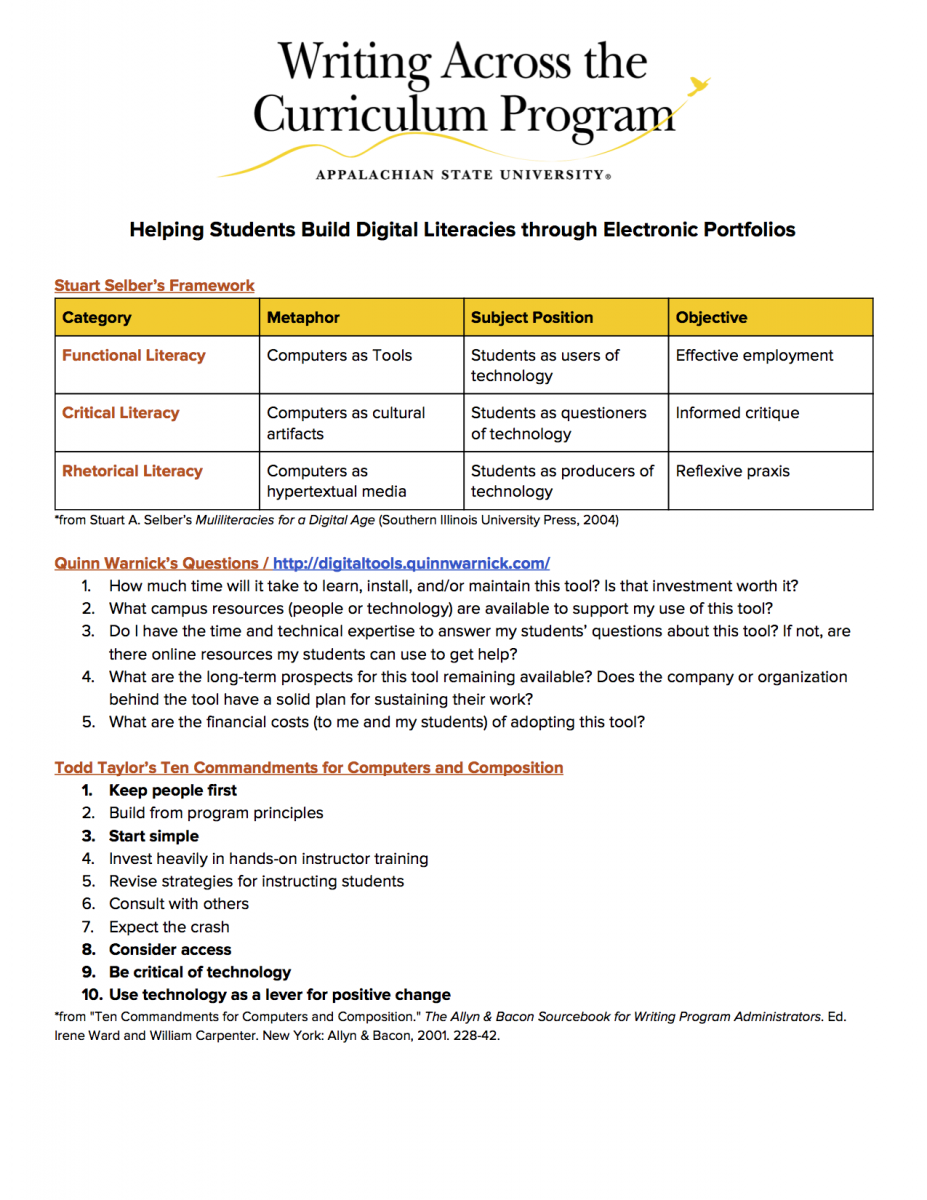The following are characteristics of ePortfolio pedagogy:
Effective ePortfolio pedagogy engages students in active learning by requiring them to go through the process of evaluating, revising, presenting, and reflecting on their best work after considering audience, context, and purpose. In order to create successful ePortfolios, students must apply their rhetorical knowledge to represent an emerging disciplinary awareness.
Process writing includes invention (writing to learn, exploring ideas, talking it out), drafting (organization concerns, attention to assignment and format, modeling by teacher), revision (audience and purpose concerns, conventions of discourse community, peer review and workshops), and editing (correctness and concerns of style of discourse community, group workshops). ePortfolios enable students to collect, organize, showcase, and reflect on their writing process, which helps them to see and identify successes and areas of struggle.
Reflection is the practice that connects learning across the various artifacts in an ePortfolio and supports the transfer of students' knowledge from one genre or situation to another. It is how students determine what they know, what they don't know, and what their next steps should be.
Ulimately, all of the above characteristics contribute to making ePortfolios a student-centered form and practice by shifting the authority from the teacher to the student and situating students as the arbiters of their own learning.
WAC is in the process of creating additional resources for ePortfolio pedagogy. Please explore our current collection of resources below. If you'd like to offer any recommendations or suggestions or schedule a one-on-one consultation, contact Miles Britton.
Reflection
WAC has collected a variety of resources regarding writing and reflective practice, shared here as Google Docs. For sample reflective assignments, please visit our sample assignments pages for WAC and WID.
- An Introduction to Reflection [Google Doc]
- Reflection FAQ [Google Doc]
- Reflection in Third-Year WID Courses and Capstones [Google Doc]
- ePortfolios as a Reflective Tool [Google Doc]
ePortfolio Tools
Access the full handout [Google Doc]
